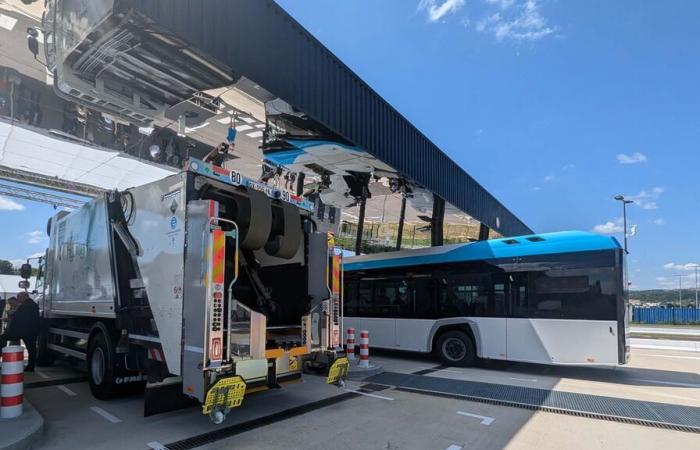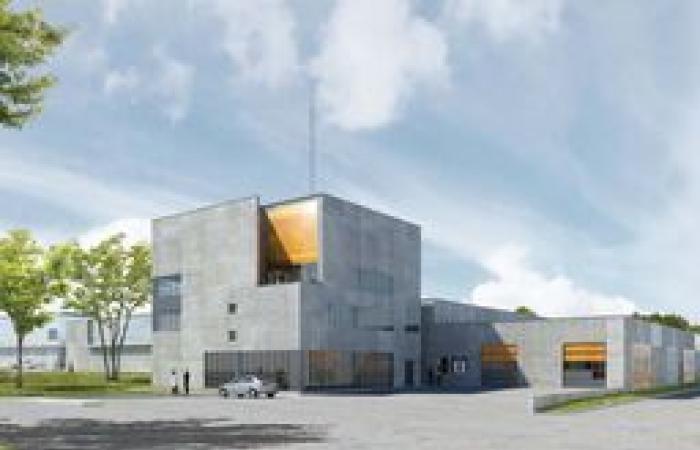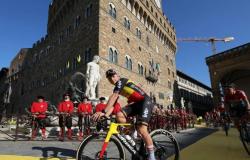Up to 430 kilos of hydrogen can be produced each day by the electrolyser of the new production and distribution station inaugurated on June 24 in the north of the Dijon Métropole area (Côte-d’Or). This project, now operational, is part of an overall budget of 100 million euros, 30% of which is intended for the construction of two hydrogen stations, the rest concerns the renewal of the skip and bus fleets. “During the summer, 4 garbage dumpsters and 28 buses will be able to supply supplies at the station but by 2035, our stations will supply up to 60 buses and 22 dumpsters» underlines François Rebsamen, president of Dijon Métropole. Every day, the station will be able to supply around twenty vehicles.
The station has four charging stations, three of which are 350 bars dedicated to heavy goods vehicles and one 700 bars for light vehicles. To produce the necessary hydrogen, the station has the entire transformation process and integrates a transformer to reduce the voltage from 20,000 to 250 volts and a current rectifier to convert alternating current into direct current. “We are also connected to the water network and have a purification unit to demineralize the water in order to obtain 99.9% pure water. We then add caustic potash. The hydrogen is led to the buffer tank of 20000 liters located in the center of the installation. It leaves the electrolyzer at 30 bars and needs to be raised to a working pressure to be sent to the nine heavy-duty tube tanks and the 18 tanks for light vehicles» explains Guillaume Haudebert, operations director at Inthy, which operates the station within the Dijon Métropole Smart EnergHy joint venture, alongside Engie Solutions Hydrogène, Dijon Métropole and Ademe Investissement.
Dozens of buses must eventually be powered by the installation
The energy mix in all its forms
The electricity necessary for the operation of the station currently comes from the Enedis network but within a few months, the energy should be supplied by the energy recovery unit. Located opposite the station, it processes 92% of the department’s waste. The infrastructure produces 37 GWh of electricity and 140 GWh of heat each year. The electrolyser will also be able to use energy from a photovoltaic plant to obtain the megawatt necessary for its operation.
The project is part of a budget of 100 million euros, 30% of which is for the construction of two hydrogen stations.
While mobility represents 40% of the territory’s greenhouse gases, this new equipment should contribute to achieving the elected officials’ objective of reducing them by 65% by 2035 to achieve a reduction of 90% in 2040. To achieve this, the community is banking on the energy mix by combining electric vehicles and hydrogen engines. The president of the metropolis, however, made a comparison: “A hydrogen city bus requires 20 recharge minutes for 300 kilometers of autonomy while an electric bus requires 4 hours of charging to travel 180 kilometers.»
Selected for you







